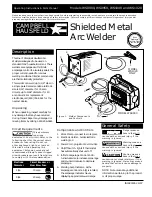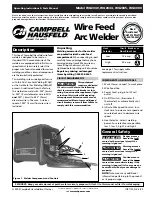
EN
Attach the elevator base securely to a flat and level concrete floor, using 4 x M12 anchor bolts, each with an
applied tensile load of 6.1kN minimum.
For further fixing advice, please refer to the following documents:
BS 8539:2012 - Code of practice for the selection and installation of post-installed anchors in concrete and
masonry
BS EN 206:2013 - Concrete - specification, performance, production and conformity
EN 1992-4:2016 - Design of fastening for use in concrete
CEO Guidance Note - ETAs for anchors used in construction
PRIOR TO USE
WARNING
WARNING
INTENDED USE
ATEX SPECIAL CONDITIONS FOR SAFE USE
The pneumatic elevator is designed for raising and lowering a drum/tank cover which has equipment mounted to
it, such as a pump, agitator or suction tube, generally for use in the painting industry.
This allows the drum/tank to be changed in the raised position. It is for professional trained users only.
Attach flexible hoses to all connections.
Connect a filtered and regulated air supply to the air connection.
Include a pressure relieving isolation valve.
Locate within 2m [80"].
Operate the elevator at a low pressure for the first time and adjust speed of operation as specified.
Ensure maximum load and position are not exceeded.
Ensure the drum can be located in the correct position consistently, preferably with a location fixture.
The drum/tank cover position should be set with the elevator fully down.
Set the positon on the Ø32 mounting bar so there is a small clearance with the top of the drum/tank.
The elevator must be earthed at all times.
A resistance <1
Ω
when measuring with an ohm-meter at the earth point
Earth connection, Binks Part No. DEK-22
Metallic parts maintain earth continuity by either direct contact, toothed washers or earth cables.
After maintenance, ensure continuity is present to earth of <1 Ohm
77-3312 R1.3
6/24
www.carlisleft.com







































